A Season of Formality Vs Fantasy, as Real Clothes for Multi-faceted Women Came Out On Top
By Angela Baidoo
Taking it back to the original concept of ready-to-wear, where practical solutions were needed for women that didn’t feature the complex construction of bespoke designs (requiring a seamstress or tailor to sew), designers once again met the moment by designing clothes that could walk off the runway and into the wardrobes of women everywhere.
For fall 2024 this meant the undercurrent of the ‘Everyday’ flowed throughout the collections across all four cities. This was interpreted in different, sometimes innovative, new ways depending on whether the target customer was the coveted 1% or someone conscious of their budget, but still wanting to invest in designers whose storytelling resonates and allows them to dream even in dark times. And as the below quote from avant-garde performance artist, Leigh Bowery, suggests whatever the circumstances we can still use our outward appearance, i.e. fashion choices, as a means of expressing ourselves and our ideas.
Fashion as a medium for projecting fantasies can be transformative, and fall 2024 gave us both time-travelling space-benders in embroidered frock coats, caveman furs, and lamé pants at Nicolas Ghesquière’s 10th anniversary Louis Vuitton show and Edward Crutchley’s medieval by-way-of The Wild West collection.
It is well known that when societies and systems show signs of volatility, that is often when artists and creatives produce some of their best work. With a ‘Make Do’ attitude they pull on their available resources (even if that’s simply their own community), as well their brand DNA and often produce magic. This moment was felt most recently when we all held a collective breath (some in attendance may have even shed a tear) watching all 30 minutes of John Galliano’s Maison Margiela SS24 Couture show. Titled the Artisanal Collection, it was a study on the “ritual of dressing”, and the exterior character – formed of our interior – we wish to reflect in the way we dress.

It’s more about expressing our…ideas and having fantasies, making them happen and also looking different and being a little bit subversive.
Leigh Bowery, Club Kids Episode, Joan Rivers Talk Show, 1993
In a season of such contrasts, the question has to be asked as to whether brands should be holding back and attempting to be taken seriously by toning down all the complexities which fashion is known for? And in doing so, will that help them stay relevant in the long-term? And the answer is inevitably, no. Designers would do well to stay the course and stay true to what makes them uniquely positioned in the market (and yes, has propelled them to multi-billion-dollar status). As it appears disingenuous to parade out grey tailored suits in a downturn and Crayola-coloured mini dresses when things are back on an upward trajectory. If you look to brands such as Prada, Jacquemus, Celine (under Hedi Slimane), and Gabriela Hearst, as well as brands as varied as Laquan Smith and Marine Serre, they have always maintained a strong belief and projection of their brand identity, even through the uncertainty of 2020. So, it is up to designers now to use this time as an opportunity to express their ideas and their fantasies. To use creativity to carve out a sense of hope, at a time when it seems hard to find.




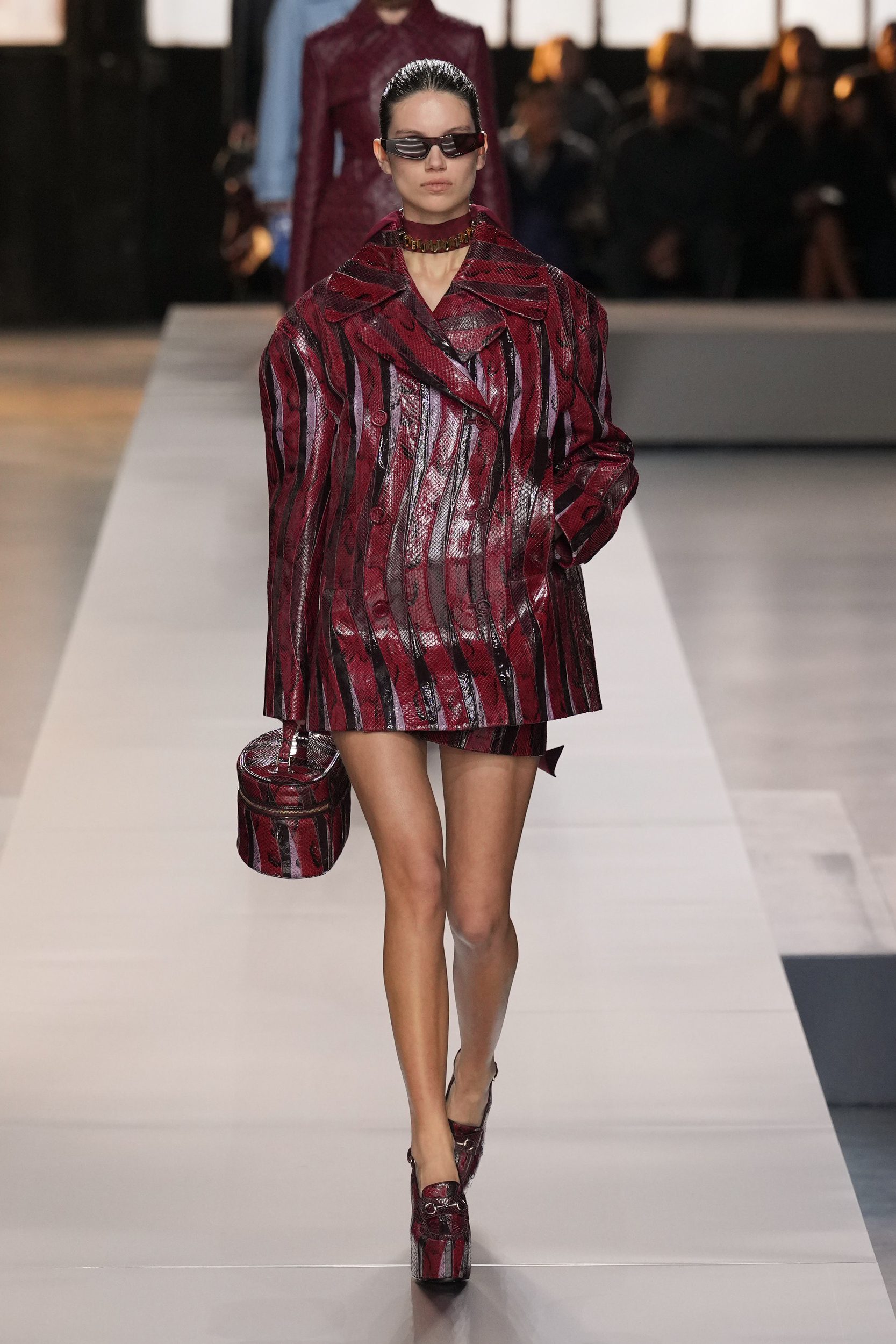

If you look to brands as varied as Prada, Jacquemus, Laquan Smith and Marine Serre they have always maintained a strong belief and projection of their brand identity, even through the uncertainty of 2020.
There will always be ways to connect with the customer while still selling a dream, and as much as the fall 2024 season should serve as the tipping point to nudge designers back towards redefining the concept of dressing on an emotional and even visceral level with even greater ambition, there will always be room alongside the perfect wool coat to to experiment with what lays beneath.
Key Takeaways
- Protect Creativity at All Costs: At a time when Quiet Luxury is trending and luxury retailers are facing increasing challenges, creativity in the form of radical and engaging ideas from both emerging and established independent designers is what maintains the fantasy within fashion.
- Everyday, But Not As We Know It: Designers got grounded in reality for fall 2024, going back to basics, elevating classic silhouettes, and doubling-down on the best fabrics to face into the uncertain climate and meet the moment.
- Brand-Building through Storytelling – Heritage, Subversion, Colloquialism: Driving cultural conversations has become increasingly important for brands, so from the set design to the invitation and ultimately the final collection, designers were consistently building a brand narrative that would resonate and draw in their customer. Acting as a point-of-difference in an ever-more crowded fashion calendar.
- W.W.W. – World Wide Womanhood: Women were celebrated and amplified this season, as every woman was catered too and could lean into a dozen personas from prim-and-proper to modern vamp.
- Leaning into and Letting Go of Legacy: With the seasonal game of creative director musical chairs still in play, an acceptance of change has to be considered moving forward to allow for heritage brands to evolve and face into the future.
Protect Creativity at All Costs
At a time when everything has stopped making sense, a beautifully crafted dress made from wisps of the finest silk that floats like candy floss can still cause jaws to drop and is the sort of wonder-making which should be protected at all costs. Even if fashion can be thought of as frivolous, despite the fact that it is a multi-billion-dollar global business, it is still one of the few places left to live out fantasies, and that is something which is needed now, more than ever.




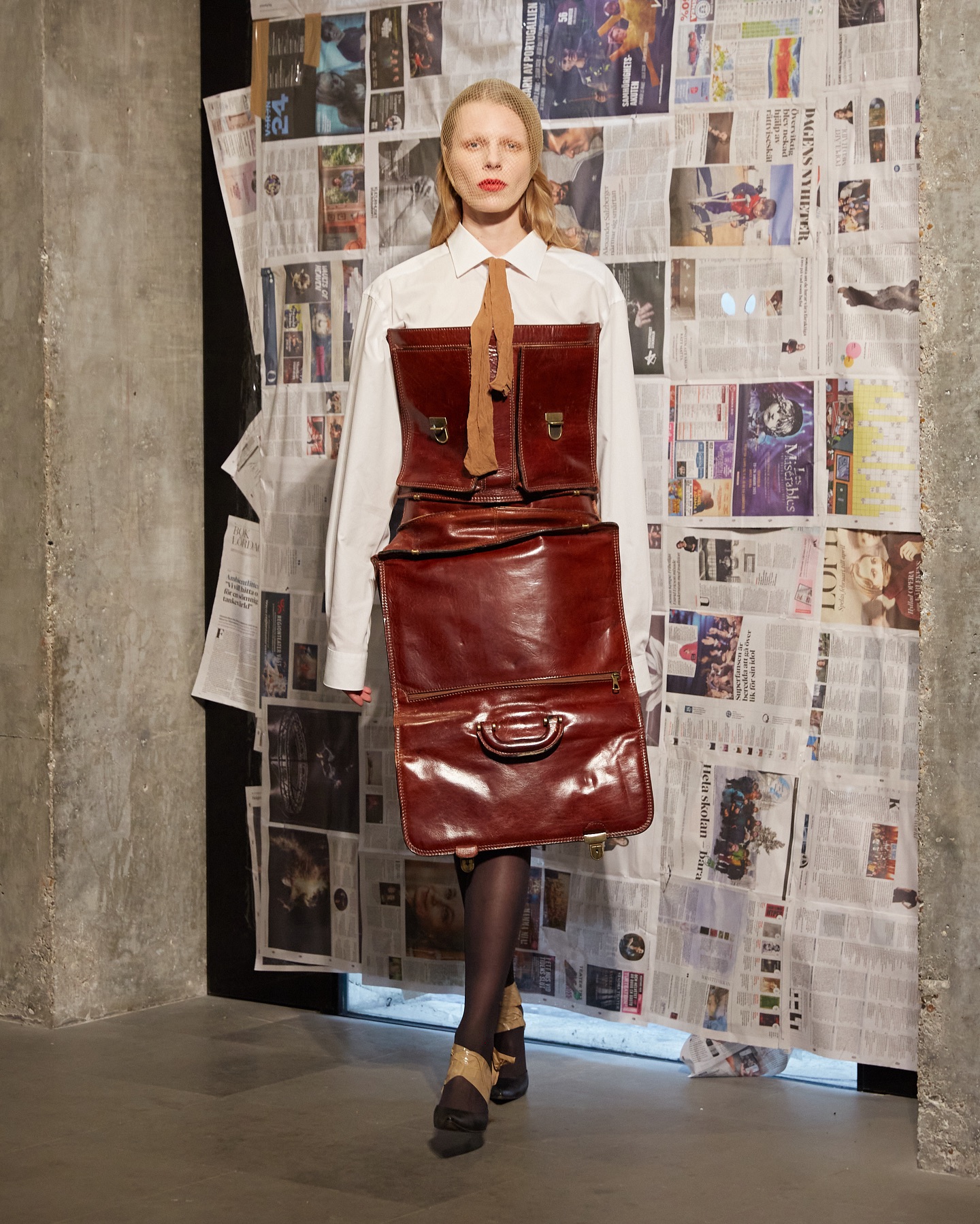

The growing risk-averse shift at the luxury level has meant that the experimentation which we saw in the before-times, is being rolled back and replaced with the tried-and-tested, in terms of diversity on the runways, especially from a size perspective, an identikit approach to hiring for the top creative director roles, a consolidation at the retail level, and a homogenization on the runways in order to sell, sell, sell.
Even if fashion can be thought of as frivolous, despite the fact that it is a multi-billion-dollar global business, it is still one of the few places left to live out life’s fantasies.

But there were designers established and emerging who refused to bend to the wave of bland, and with them real promise was to be found amongst the hundreds of shows that were presented this season. From Luar, a former LVMH Prize semi-finalist, who managed to score one of New York fashion weeks most exclusive front row guests in the form of Beyoncé, and his body-defying silhouettes, to Paolo Carzana’s most personal work to-date of hand-dyd aloe vera fibre jackets, blended with peace silk and organic cotton. Then there was Sunnei, whose Milan fashion week show was one of the most engaging of the season. Set in the working carpet factory of cc-tapis, they had collaborated with the manufacturer for the season in what was more than just a marketing strategy, as they utilised actual carpet in the creation of multi-disciplinary designs.



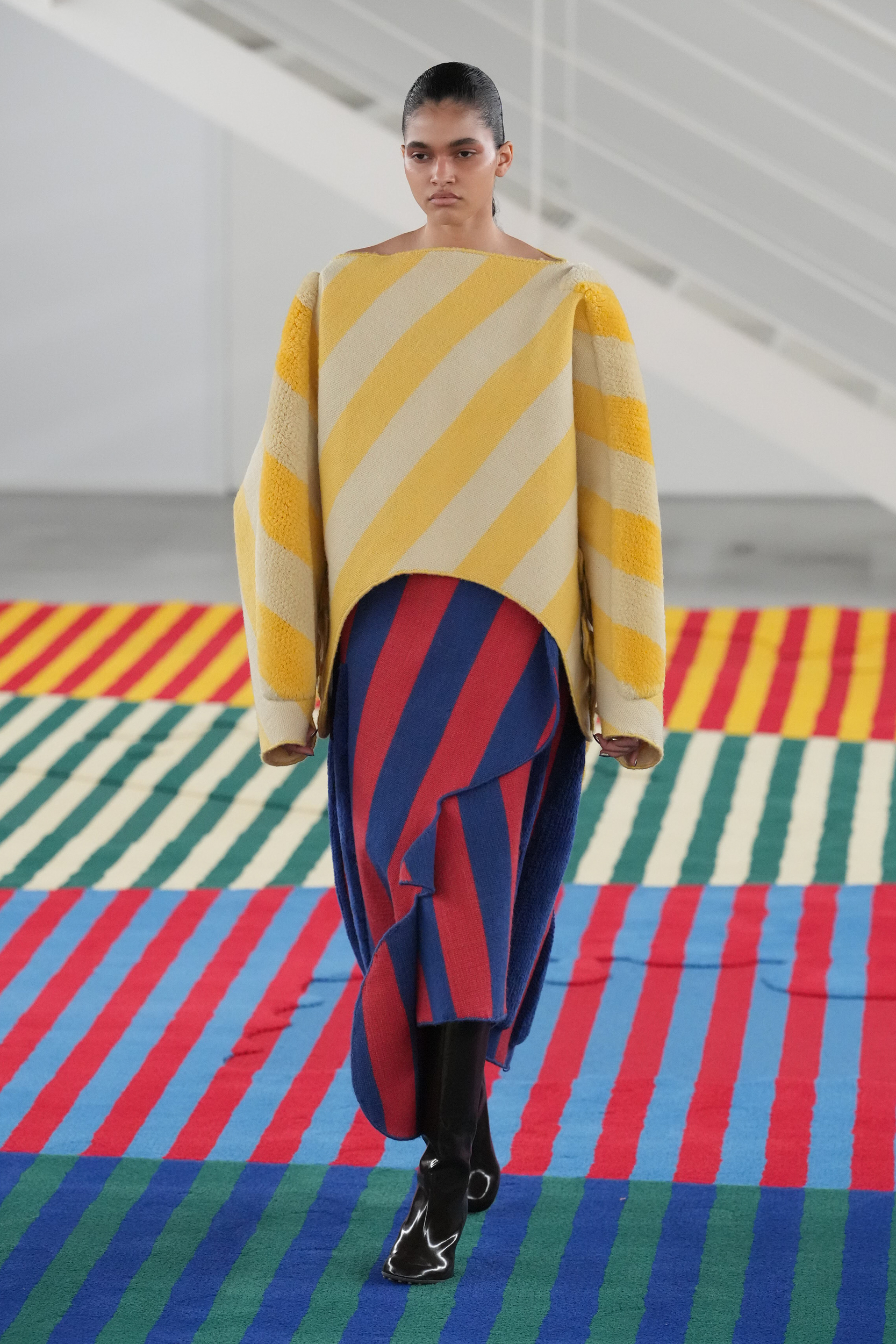

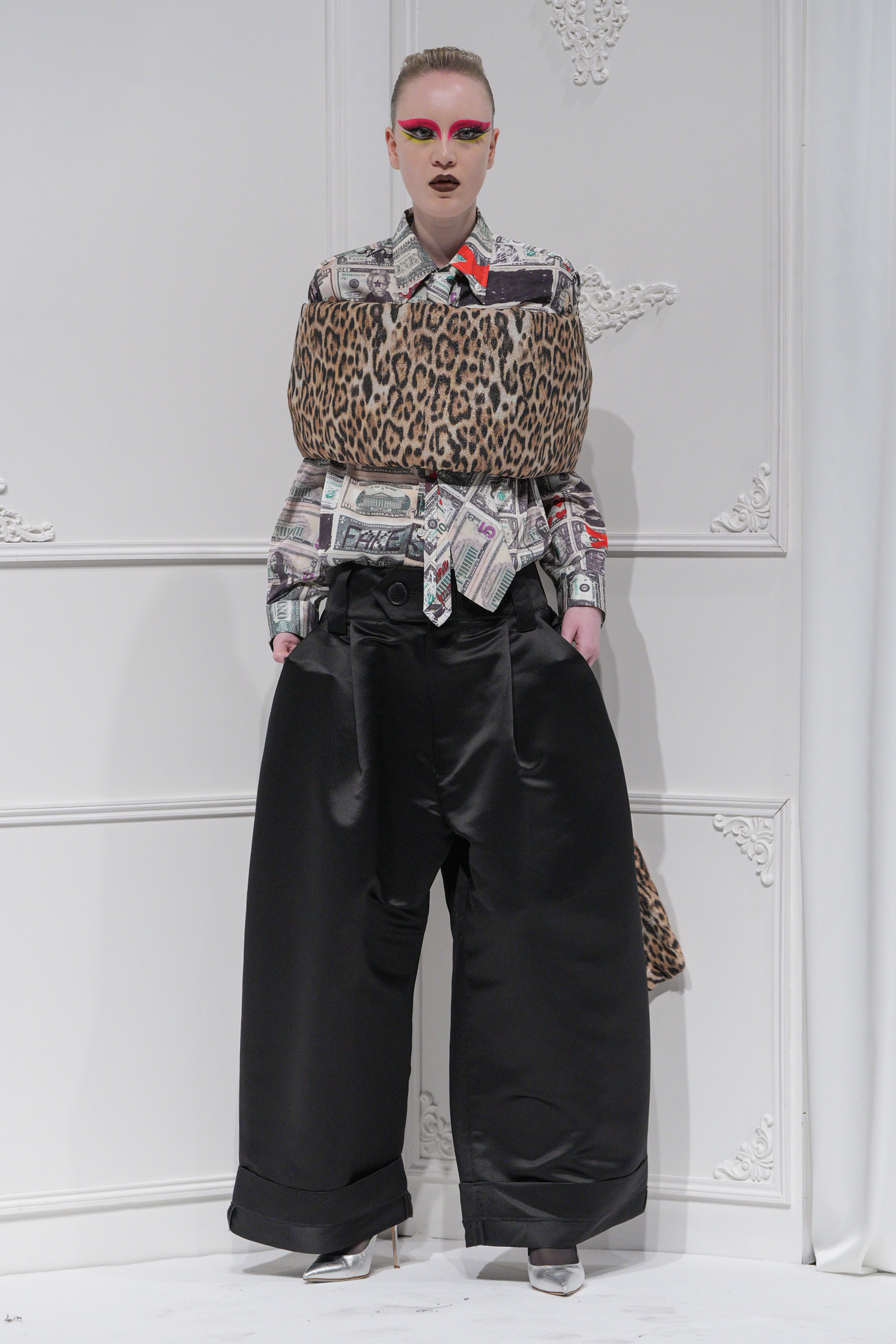



A common thread among these uncompromising creatives is encouragingly, a desire to embed suistanable processes throughout their work. Finding innovative ways with fabric re-use, dying techniques, and embellishment, from Marine Serre and Germanier, to newcomers and LVMH Prize semi-finalists Hodakova and Duran Lantink, there has been no trade-off in the level of creativity on display this season with the re-purposing of old materials into new products, whether thats old ski sweaters or leather briefcases.
Everyday, But Not As We Know It
‘Everyday dressing’ for most may mean a trip to Gap, H&M or Zara, not a $10,000 leather fringed coat. But in the pursuit of getting ‘real’ for fall, some designers became even further detached from reality. Or maybe not quite as honest as to who these ‘everyday’ clothes were supposed to be worn by. Because if we’re talking about the ultra-HNWI client – a niche co-hort of customer increasingly responsible for more than half of the spend taking place in the luxury market – then they can be appreciated, and even, admired for what they are, the most exquisite versions of your daily basics. Which in itself was an intriguing proposition, as designers such as Matthieu Blazy at Bottega Veneta demonstrated how items that are pulled from the daily wardrobe can be made in the finest leathers, cashmeres, or trompe l’oeil effects with innovative materials.




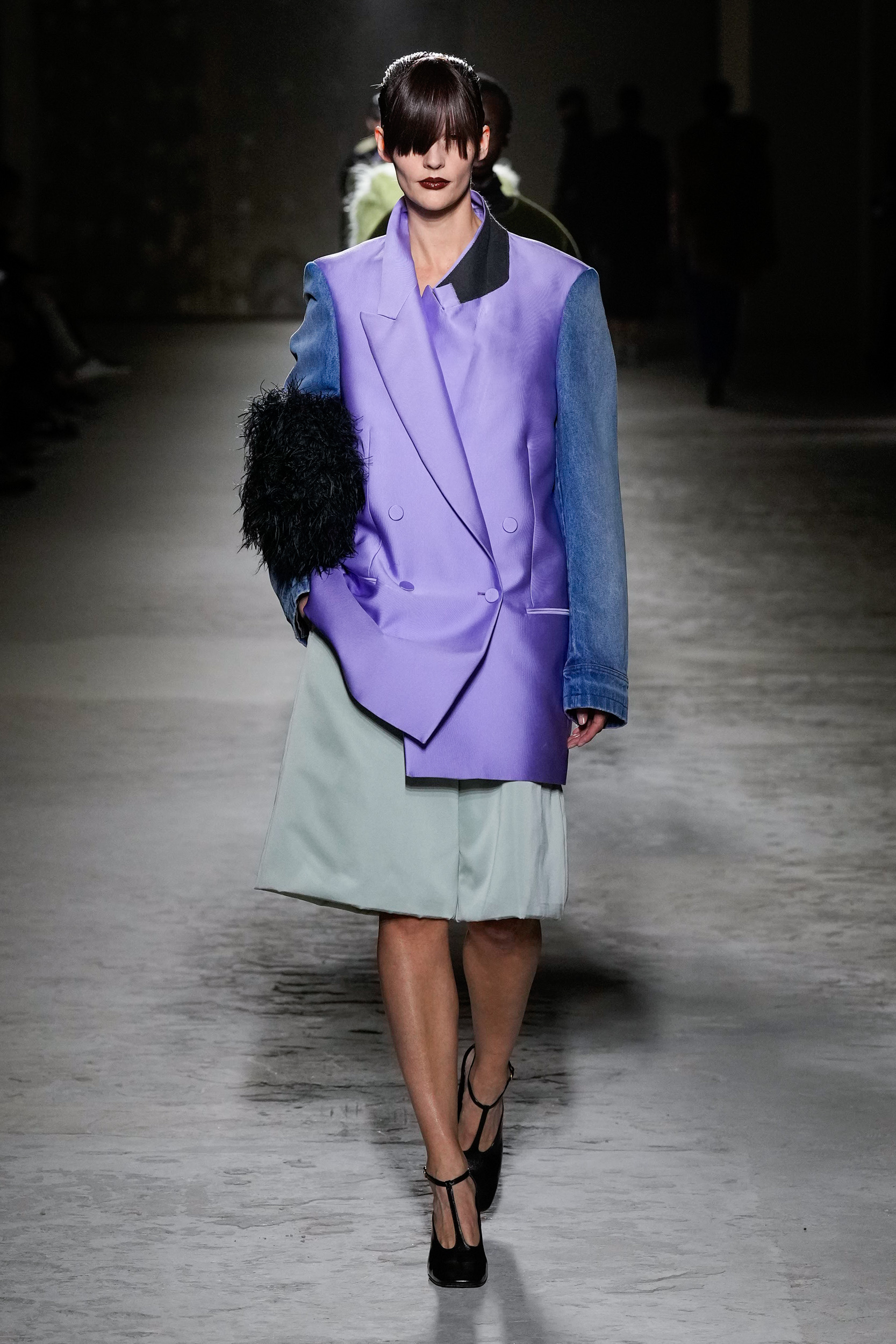





This season designers had to strike a balance between facing into the mood of a nation and producing collections accordingly, which are sensitive and solutions-based. In some cases, this meant playing with shapes using volume, such as The Row’s trapeze trench coat, or a simple re-styling of the classics as was seen at Dries Van Noten and LVMH Prize semi-finalist Vautrait where crisp dress shirts were worn back-to-front.
There were a few brands whose idea of what constitutes dressing for the everyday bucked with the conventional minimalist uniform, and challenged with sparks of colour (Philosophy di Lorenzo Serafini) and bombastic shapes (Stella McCartney). Take Victoria Beckham, who went so far as to introduce the wire hanger – that most ubiquitous symbol of daily life – into her designs, adding a surrealist touch which matched the tone of her high-waisted, low-crotch wide leg pants that have become her signature.












This is the true essence of ready-to-wear – clothes meant to be worn by real people in the real world – but it was also importnat that what was presented on the runway had to exude more than what could have been simply photographed for a lookbook, and while some fell short there were others who rose to the occasion and will renew a love for the simplicity of capsule dressing.
Brand-building through Storytelling – Heritage, Subversion, and Colloquialism
The fantasy of owning your own brand is still an intoxicating draw for young graduates of the world’s best art schools. With many being practically groomed into that mindset from the moment they step foot into the class room to the moment they take the creative directors chair. And for all the difficulties they face as new business owners, often without the business acumen, surviving in an industry which is losing wholesale partners by the week, such as Matches Fashion being put into administration a day after Paris fashion week came to a close, they persist in putting on a show – or the more intimate format of a presentation – to share their vision.




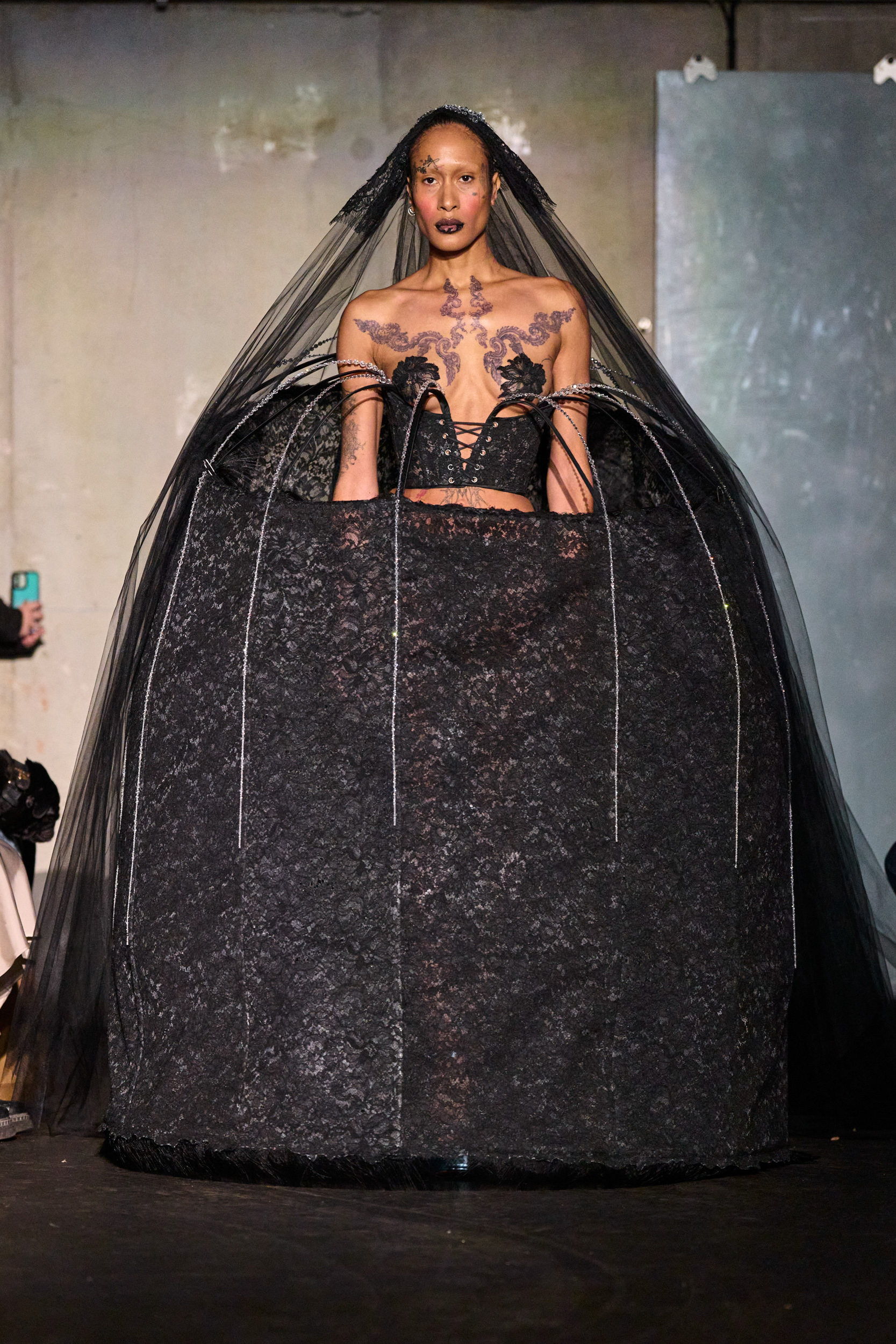

Independent designers – both old and new – succeeded against the odds of a challenging climate and brought to the stage new and exciting ideas, which got audiences talking and created memorable moments around both their shows and their collections. There was also a savviness to how they connected with their audiences, more often-than-not using storytelling and creating cultural conversations as a mode of transportion into their worlds. Tolu Coker – the British-Nigerian multi-disciplinary artist – spirited showgoers away to the vibrant markets of West Africa with stalls, produce, and coloured umbrellas used as props and a performance by an elder to kick off the show. Her collection was a play on the traditional ‘Sunday Best’ styles that were given a vibrant, youth-led twist and aligned with the designers desire to link her community to the heritage of home, while amplifying craft in her messaging. Victor Weinsanto’s show is consistently oversubscribed each season, as it is highly anticipated for the way he mixes performance art (his background is in ballet and his muses come from the world of cabaret), costume techniques, a little subversion, and fashion interlaced with a savvy understanding of the need for a sprinkling of covetable commercial hits. Stocking at the global outposts of Dover Street Market, Nordstrom and Selfridges London the designer has built a brand which puts storytelling at the centre, balanced with a commerciality that demonstrates his business know-how.
What’s exciting about these shows is they are often populated with genuine fans of the brand, who queue up for the chance to gain access to watch as their faves star ascends season-after-season, in many cases wearing their collections to showcase their solidarity and demonstrating that fandom can be harnessed at all levels of the luxury fashion pyramid.

Simone Rocha’s show was the conclusion of a triptych – SS24’s “The Dress Rehearsal”, and “The Procession” Couture with Gaultier, and now fall 2024’s “The Wake” – weaving intertwining threads across her collections, she has built a narrative which has evolved her visual language with each collection.
W.W.W. – World Wide Womanhood
Being a woman in the 2020s has proven to be more than challenging and has amplified that there is still a way to go in the fight for equality and representation. Size representation itself took a downward turn this season, a trend which plus-size activist and model Felicity Hayward noted in her seasonal #IncludingTheCurve report. Paris and Milan had less than one percent plus-size model representation (0.78% and 0.4% respectively), New York just over one percent (1.14%), while London came in at just over three percent (3.35%), which translates into 67 curve or plus looks out of 2000 which was down to progressive designers such as Sinēad O’Dwyer and Di Petsa.



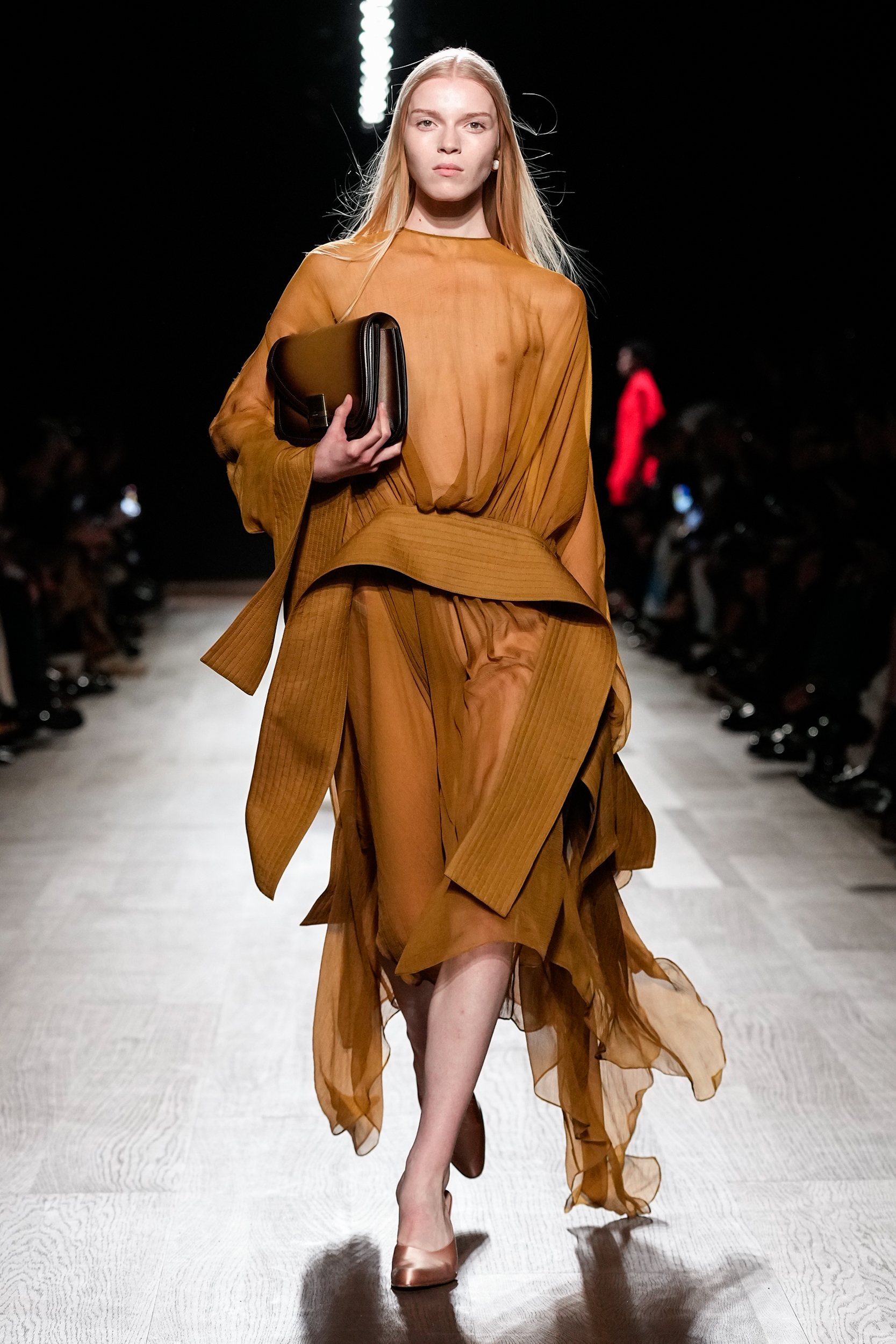


Despite this worrying, but not unsurprising, trend backwards across all four cities, designers spoke to those who would eventually purchase their clothes and signalled that they could be ladies who lunched at Tory Burch, multi-faceted and not all they first appeared at Prada, working mothers at Marques’ Almeida, proudly pregnant soon-to-be mothers at Ester Manas, inhabit a powerful persona at Erdem, and embrace the freedom of the 1970s bohemian era at Chloé. These were collections celebrating the girl, the woman, the artist, the founder, the sportsperson, the lawmaker, the wife, the mother, with respect to the many different roles she plays and ways in which she navigates through the world.

Acknowledging the multi-facted nature of modern women’s lives, fall 2024 gave them a myriad number of options to try, mix up, and layer different looks to be whatever version of themselves they need from day-to-day or season-to-season.
For next season there will be more opportunities than ever for women to explore their individuality. As Miuccia Prada told The Impression backstage after her Miu Miu show “You can choose different moments of your life and decide how you want to mix them up. Even for myself I have to decide whether I want to be a 15-year-old girl or a lady each morning”



Fall’s woman doesn’t have to be put together, or even have it all together, but when she does, it will be in the best possible way.
Leaning Into and Letting Go of Legacy
Surviving a decade in the creative directors chair or in building an independent brand may be practically unheard of in 2054, but in 2024 Joseph Altuzarra celebrated 15 years of his namesake label, while Glenn Martens, after cancelling his slot on the Paris schedule released a lookbook for the 10th anniversary of Y/Project. But it was Nicolas Ghesquière’s celebration of a decade at Louis Vuitton that drew a crowd of over 4000 guests to the Louvre. With a collection spanning his career highlights with the fashion house. Tapping into retro-futurism, riffs on Louis Vuitton luggage through a spliced print, and a few possible options for the French national team when this summer’s Olympic Games lands in the city.
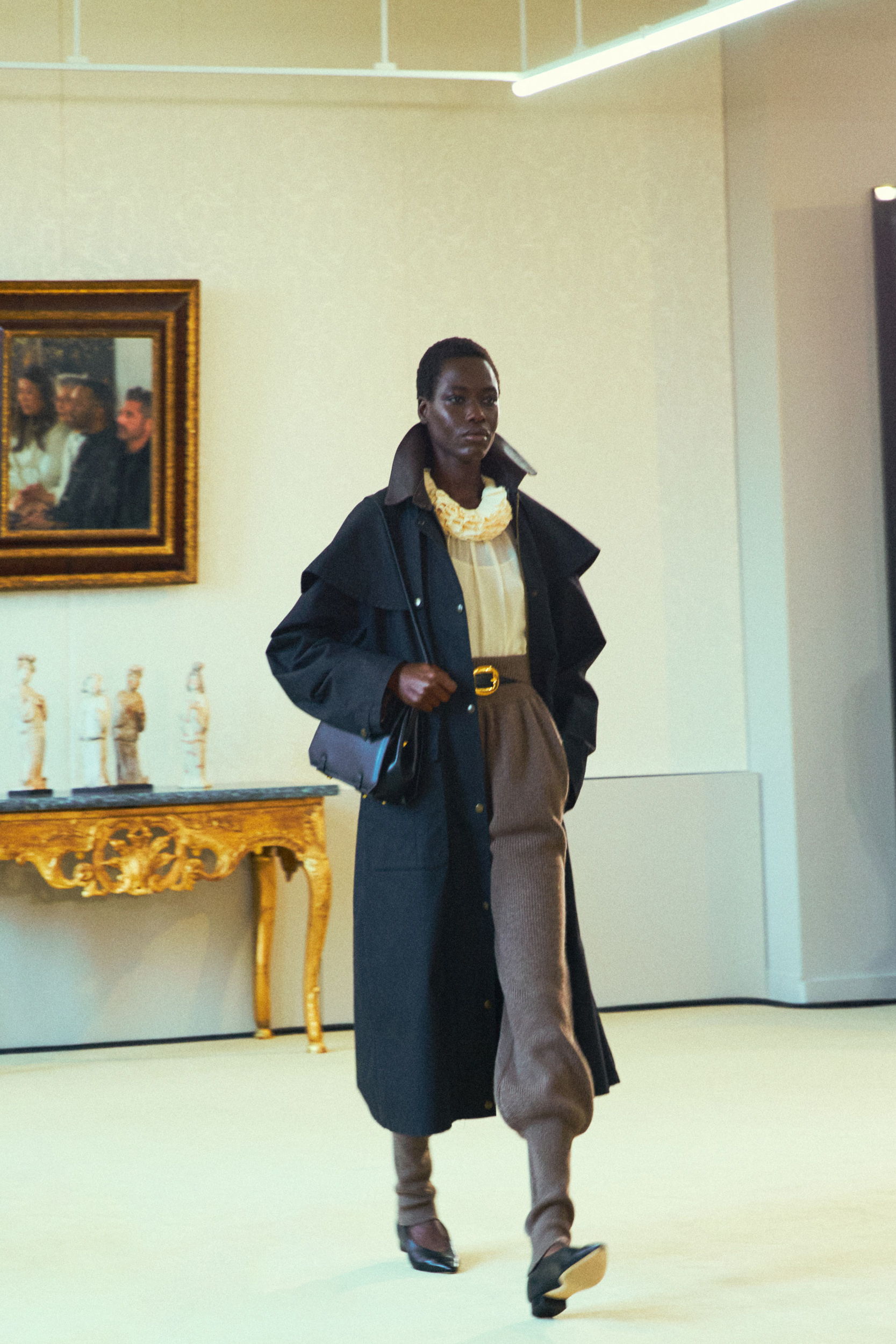








The season didn’t have as many debuts as in recent years, as newly appointed creative directors braced themselves for the ongoing scrutiny of their second or third collections for the brands they had taken the reins of. Instead there were many conversations had around the idea of legacy – how to protect it, how to evolve it, when to lean into it, and when to let it go.




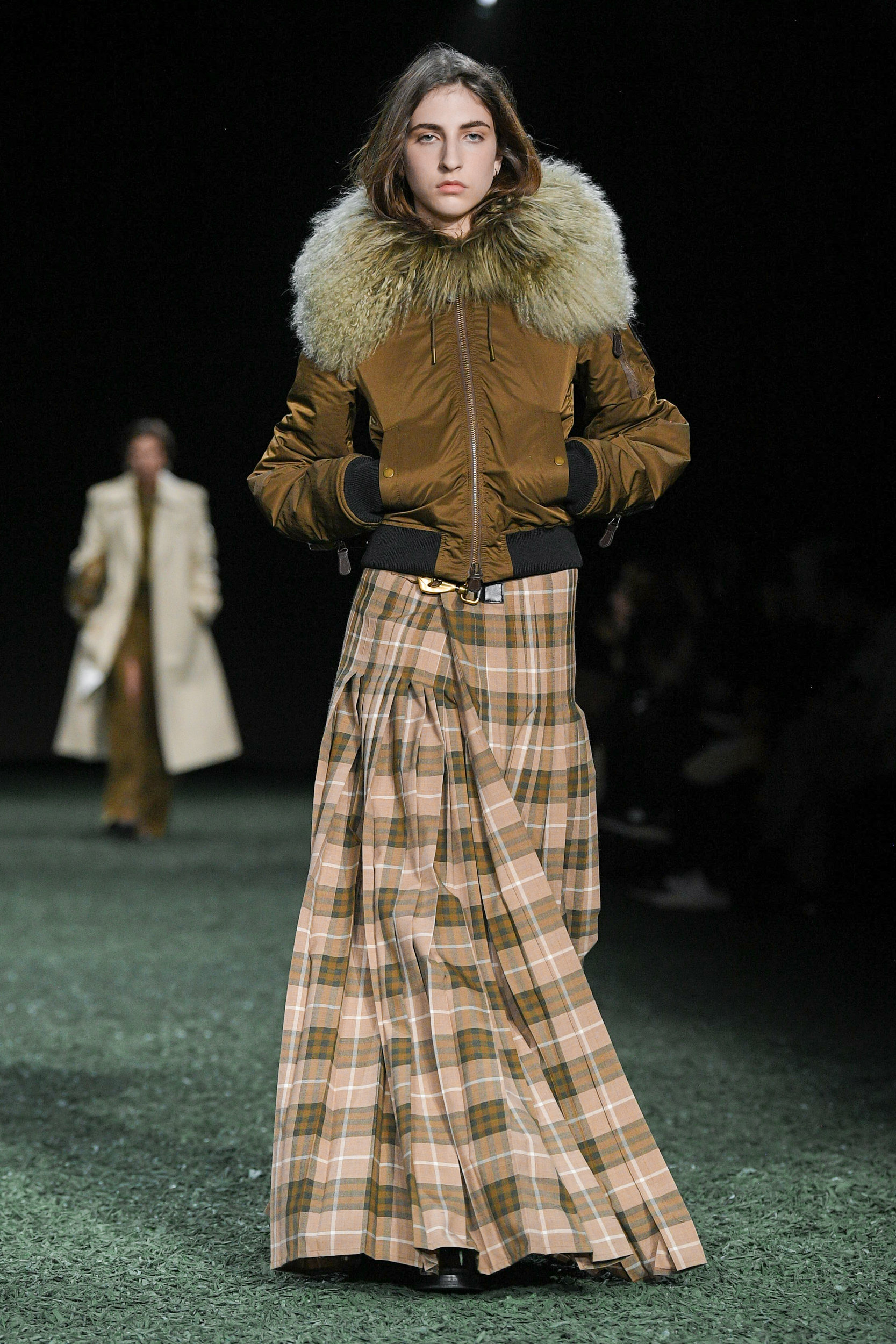
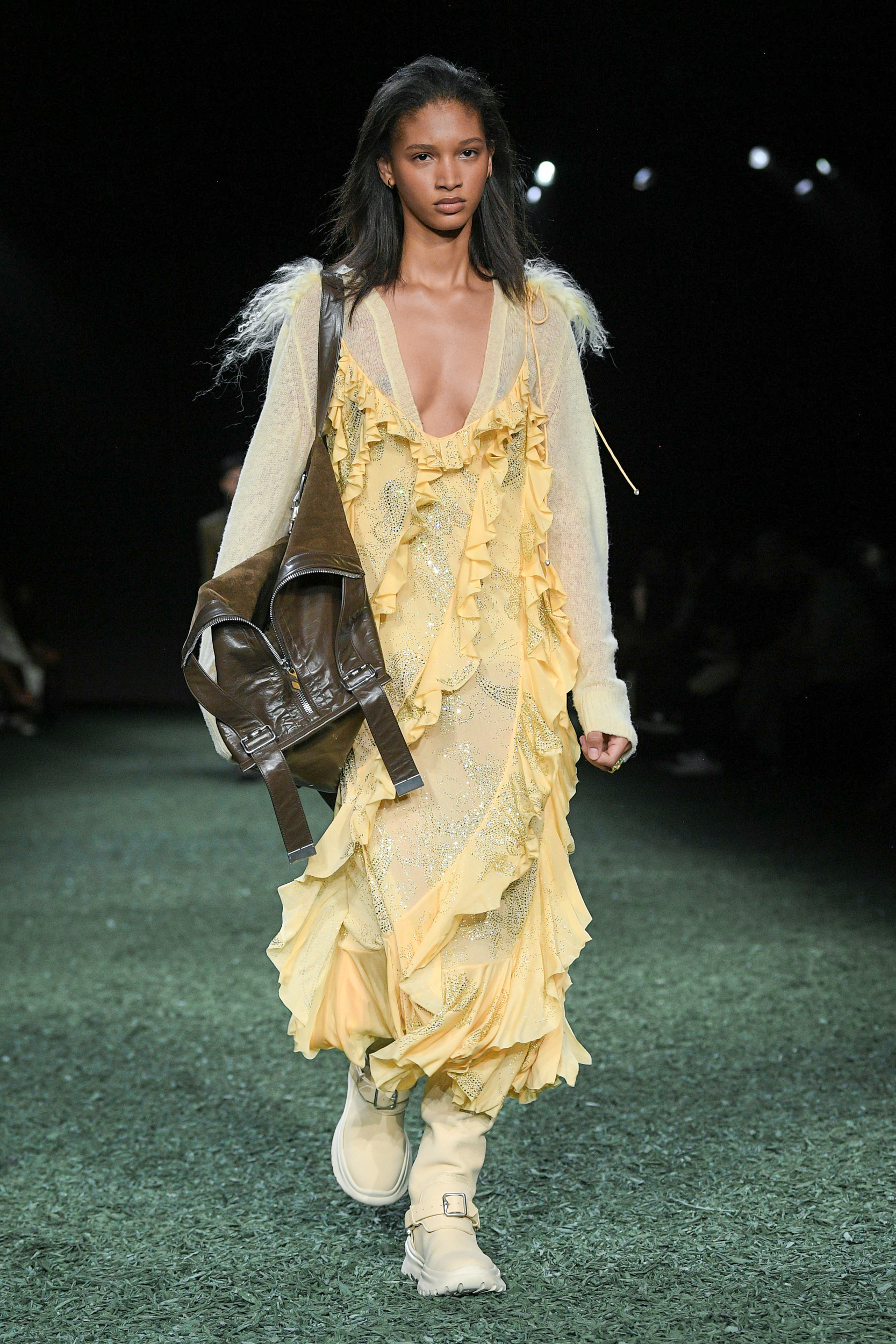


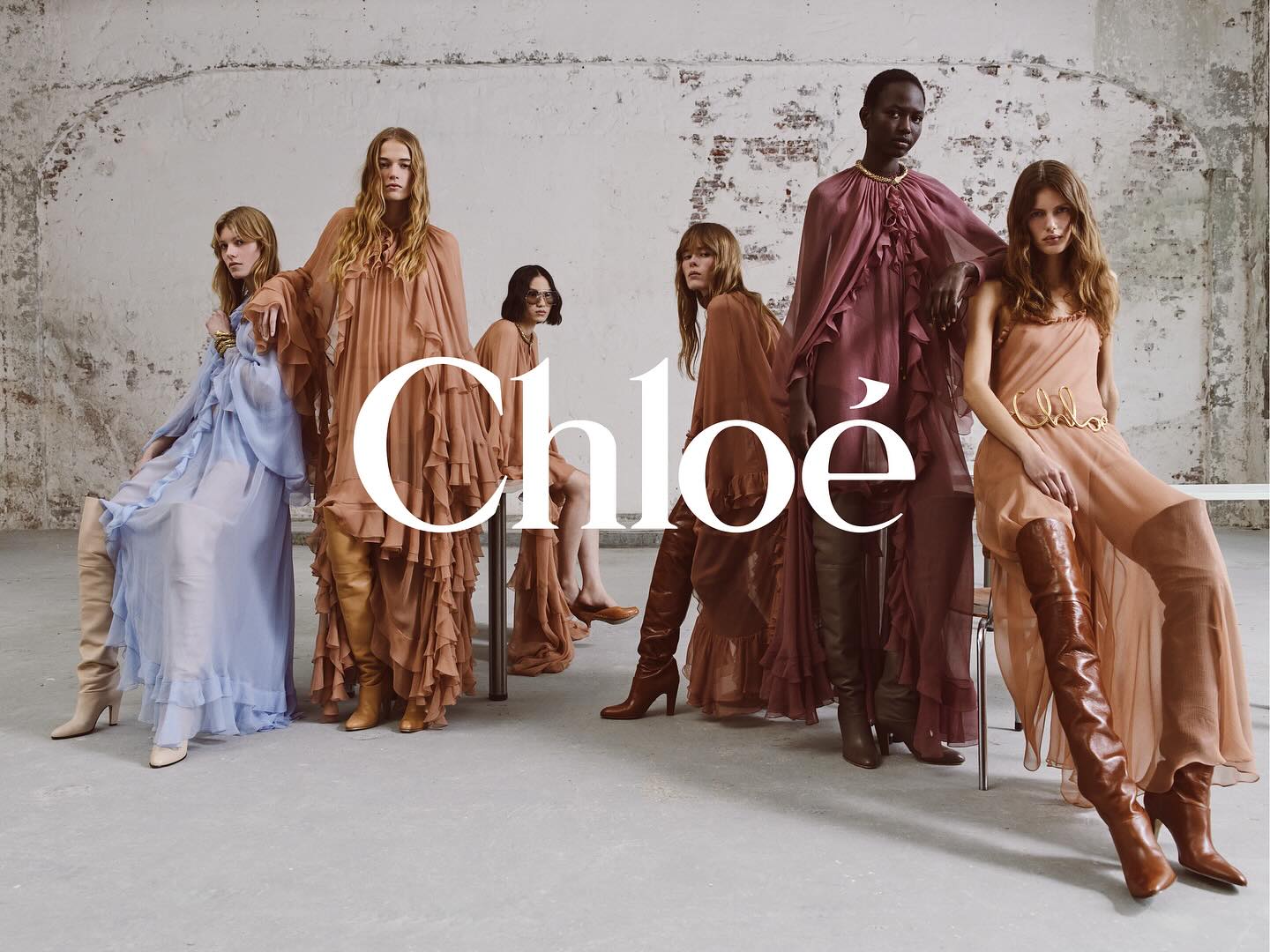






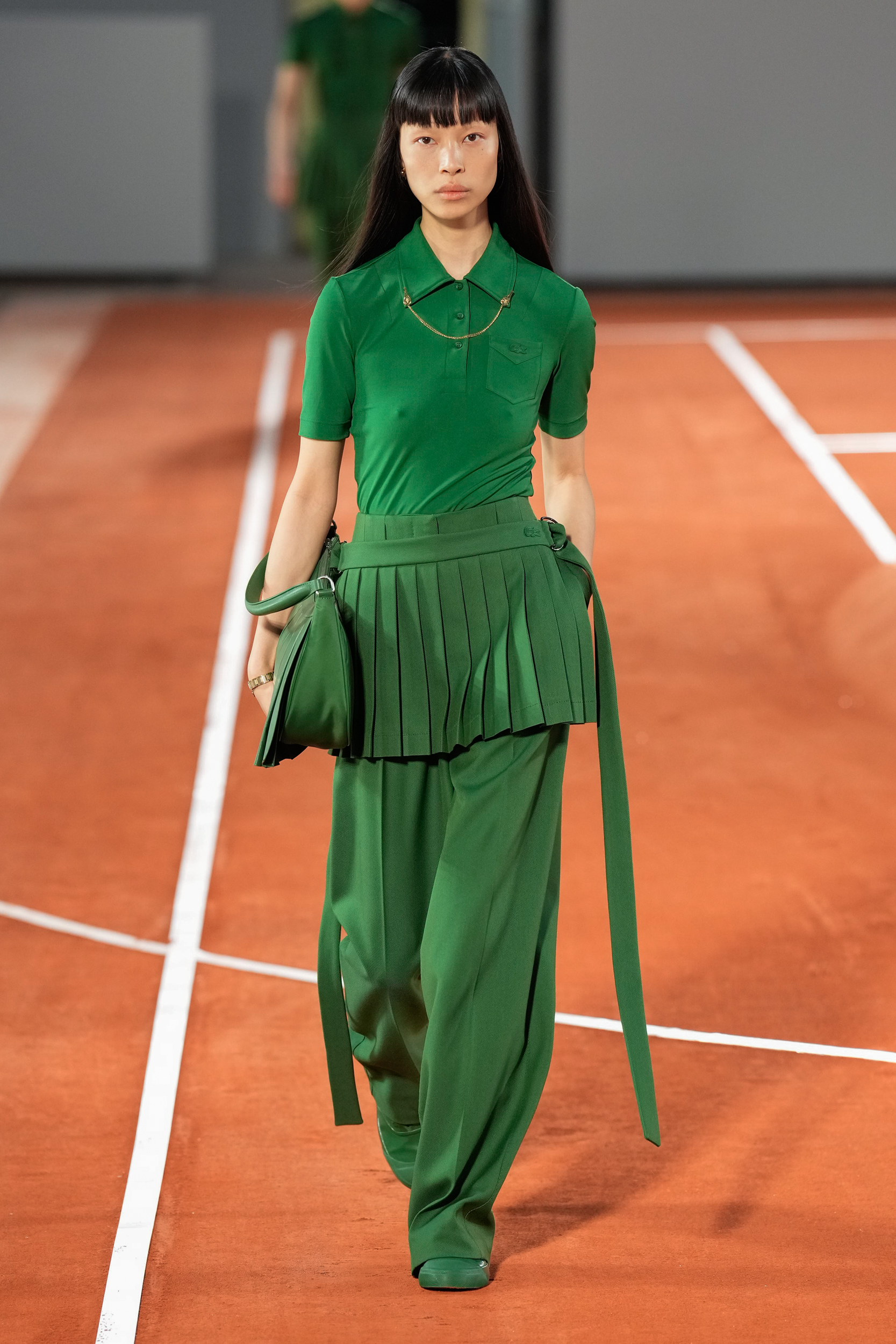
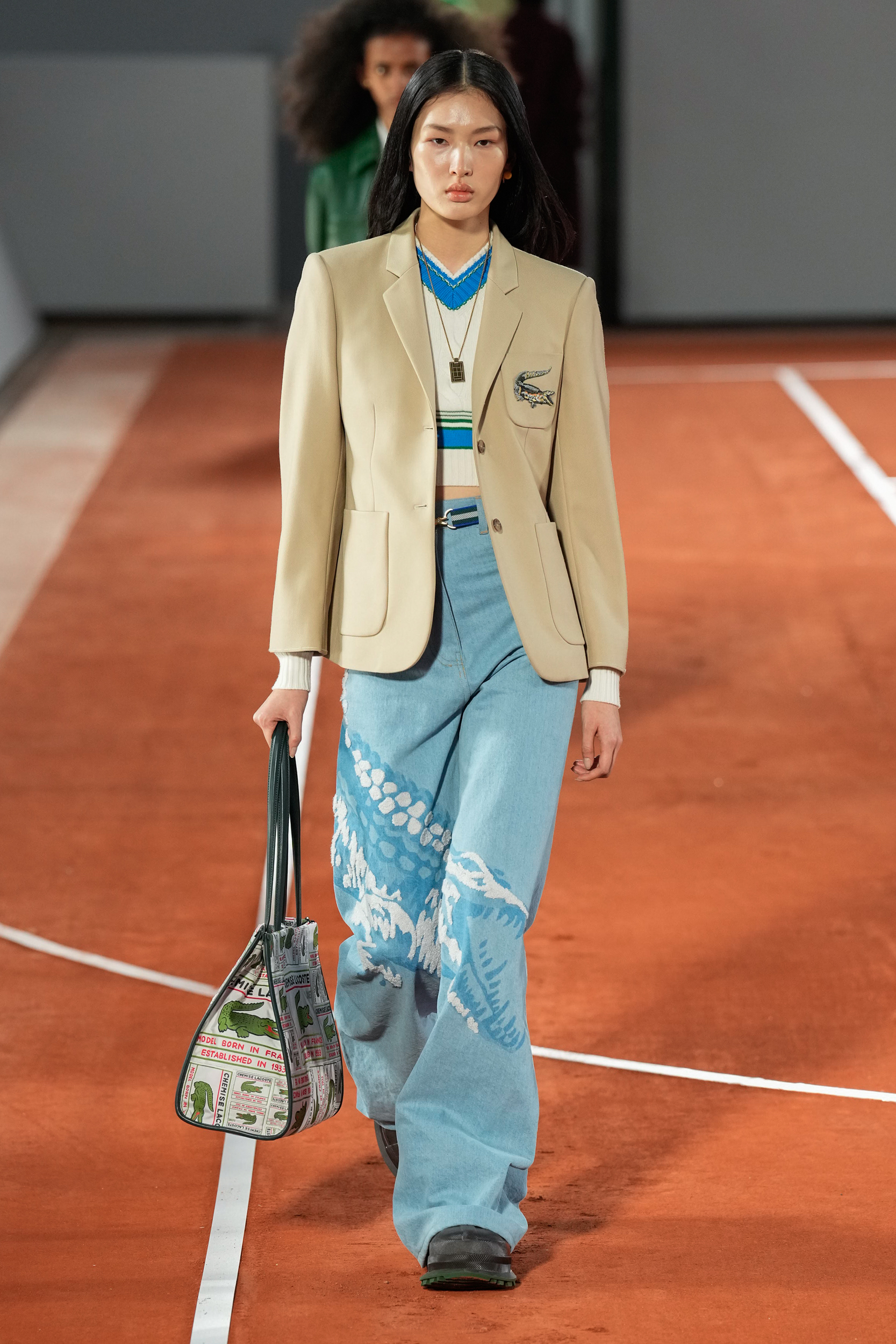
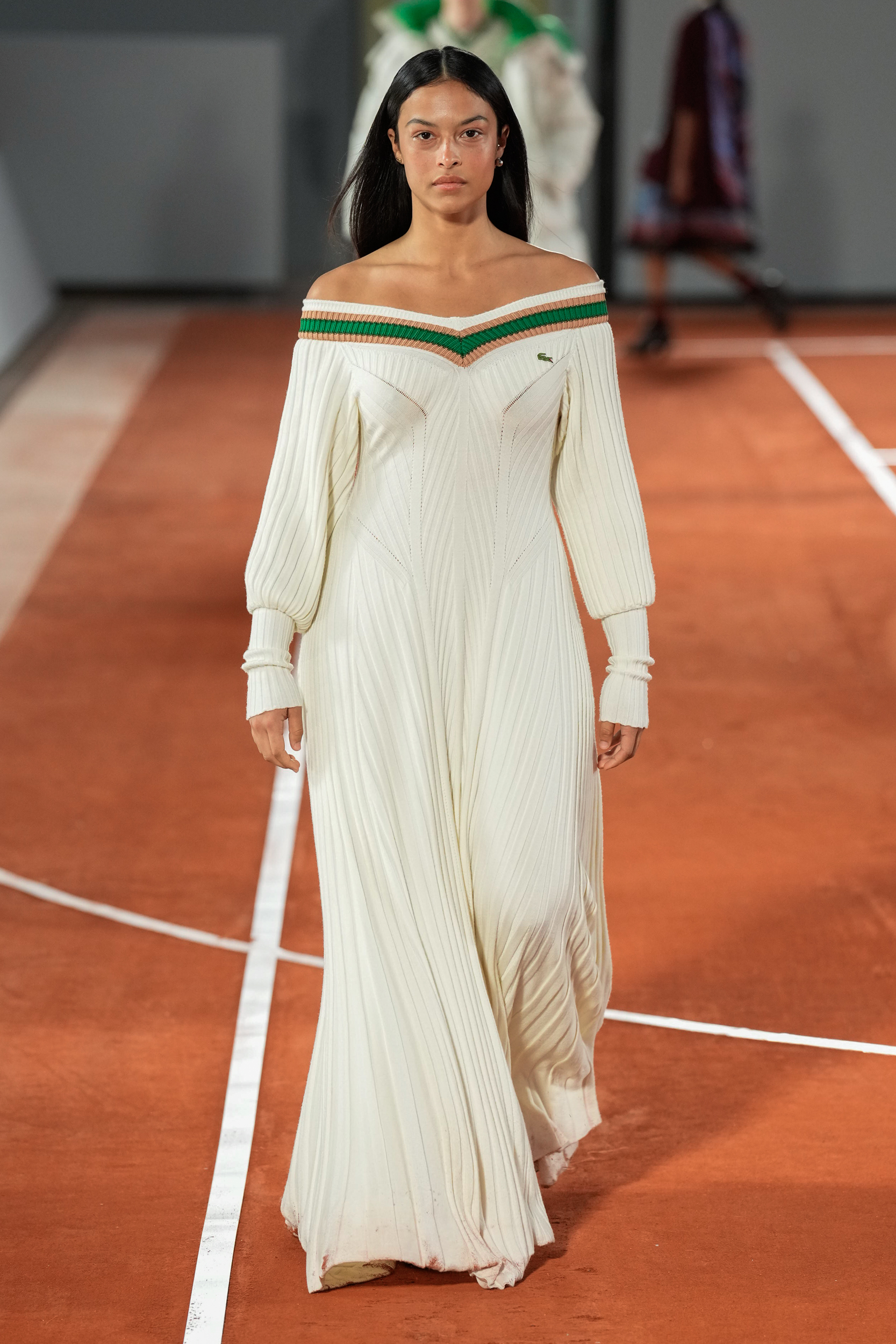
The debut collections of two – of only a few – female creative directors at the luxury fashion level, Chemena Kamali at Chloé and Pelagia Kolotouros at Lacoste, were received positively and laid the groundwork for what looks to be a promising start from them both. Lacoste featured guests as iconic as Grace Jones as well as Adrien Brody, and Kolotouros wasted no time leaning into the brands history in the sports arena, specifically tennis (and as at Casablanca is likely to benefit from additional exposure during the Olympics). Updating key silhouettes from the sport such as the tennis skirt through styling it over trousers and giving the tennis dress a knitted update in a maxi-length, her remix of the brands logo was also an unexpected, yet playful touch. While at Chloé, Kamali captured the zeitgeist with her impeccable timing in the reintroduction of the Chloé girl aesthetic i.e. boho chic. Harnessing the power of social media she rolled out a campaign of portraits which captured the”emotion and energy” of the house. Both these strong debuts showed how to lean into legacy while also evolving it so it resonates with what the customer needs today.

With the Birds collection, it was the idea of these simple garments with a slight twist to them. I tried to start with that essence and bring it forward with more experimental ideas.
Seán McGirr, creative director, Alexander McQueen
Conversations around legacy were nowhere as loud than at, and post, Seán McGirr’s debut for Alexander McQueen. Dividing the opinions of the press and fans the collection – more than anything- provided the starting point for us to get a glimpse into McGirr’s direction for the brand. And that is likely to take more than one season. But from his first outing it is clear that while the foundations are there it is a brand which we are going to see evolve under this new tenure. And if the position of creative director – for any potential candidate of a house with a lengthy history, unless they come from family stock – is to avoid becoming a poison chalice then there is going to have to be an acceptance that legacy’s have to be allowed to evolve. To allow for each new era to have its moment.
It is known that the industry is slow to change but this is an ongoing issue which will only be resolved by giving creative directors time to flourish, especially as legacy-planning is going to be something which many heritage houses are going to have to face into time and again if they fail to back the new talent they appoint to the top roles within the industry.
